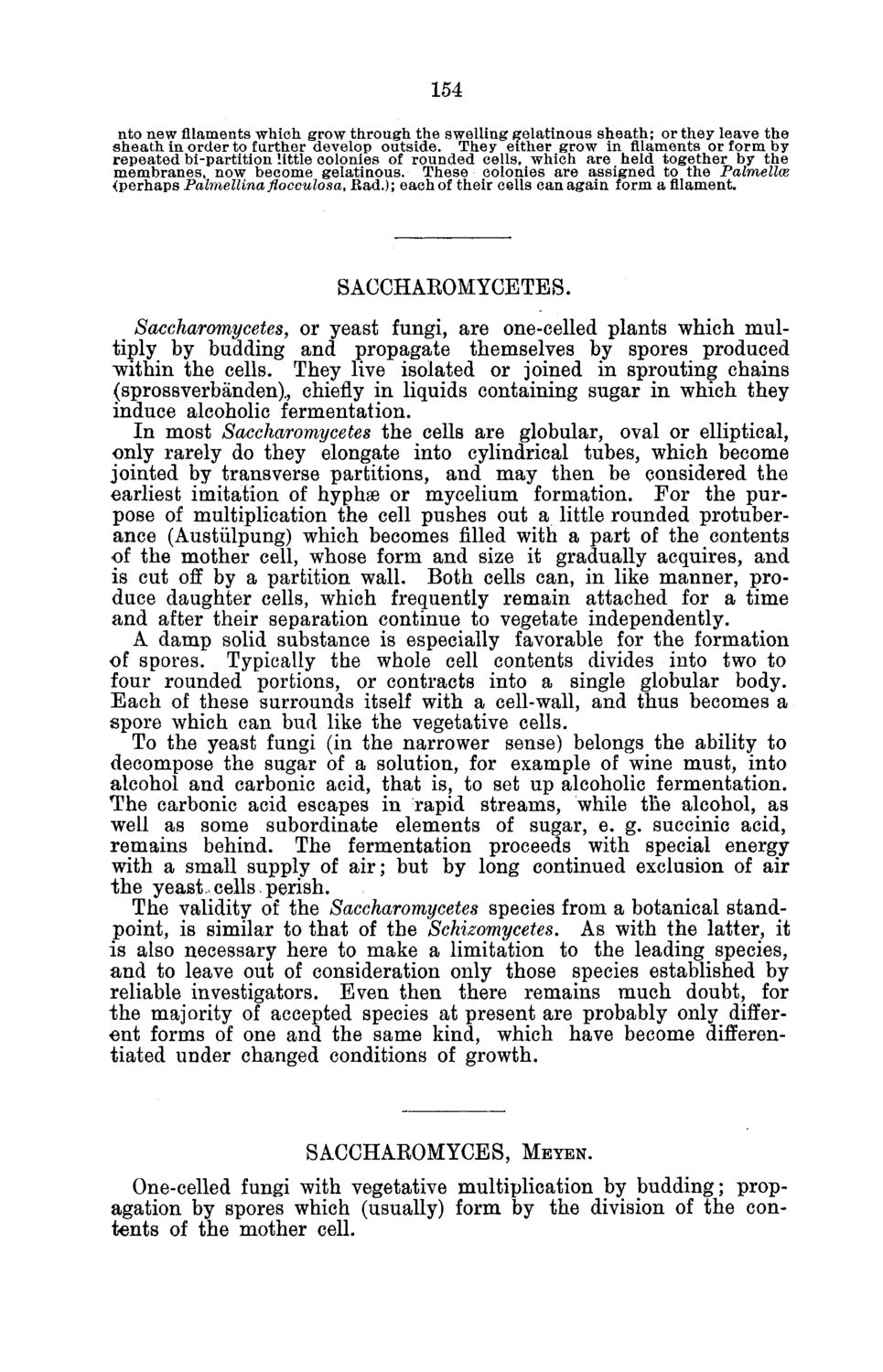| |
| |
Caption: Board of Trustees Minutes - 1882
This is a reduced-resolution page image for fast online browsing.

EXTRACTED TEXT FROM PAGE:
154 nto new filaments which grow through the swelling gelatinous sheath; or they leave the sheath in order to further develop outside. They either grow in filaments or form by repeated bi-partition little colonies of rounded cells, which are held together by the membranes, now become gelatinous. These colonies are assigned to the Palmellce <perhaps Palmellina flocculosa, Bad.); each of their cells can again form a filament. SACCHAEOMYCETBS. Saccharomycetes, or yeast fungi, are one-celled plants which multiply by budding and propagate themselves by spores produced within the cells. They live isolated or joined in sprouting chains (sprossverbanden)., chiefly in liquids containing sugar in which they induce alcoholic fermentation. In most Saccharomycetes the cells are globular, oval or elliptical, only rarely do they elongate into cylindrical tubes, which become jointed by transverse partitions, and may then be considered the earliest imitation of hyphse or mycelium formation. For the purpose of multiplication the cell pushes out a little rounded protuberance (Austiilpung) which becomes filled with a part of the contents of the mother cell, whose form and size it gradually acquires, and is cut off by a partition wall. Both cells can, in like manner, produce daughter cells, which frequently remain attached for a time and after their separation continue to vegetate independently. A damp solid substance is especially favorable for the formation of spores. Typically the whole cell contents divides into two to four rounded portions, or contracts into a single globular body. Each of these surrounds itself with a cell-wall, and thus becomes a spore which can bud like the vegetative cells. To the yeast fungi (in the narrower sense) belongs the ability to decompose the sugar of a solution, for example of wine must, into alcohol and carbonic acid, that is, to set up alcoholic fermentation. The carbonic acid escapes in rapid streams, while the alcohol, as well as some subordinate elements of sugar, e. g. succinic acid, remains behind. The fermentation proceeds with special energy with a small supply of air; but by long continued exclusion of air the yeast cells perish. The validity of the Saccharomycetes species from a botanical standpoint, is similar to that of the Schizomycetes. As with the latter, it is also necessary here to make a limitation to the leading species, and to leave out of consideration only those species established by reliable investigators. Even then there remains much doubt, for the majority of accepted species at present are probably only different forms of one and the same kind, which have become differentiated under changed conditions of growth. SACCHAKOMYCES, MEYEN. One-celled fungi with vegetative multiplication by budding; propagation by spores which (usually) form by the division of the contents of the mother cell.
| |